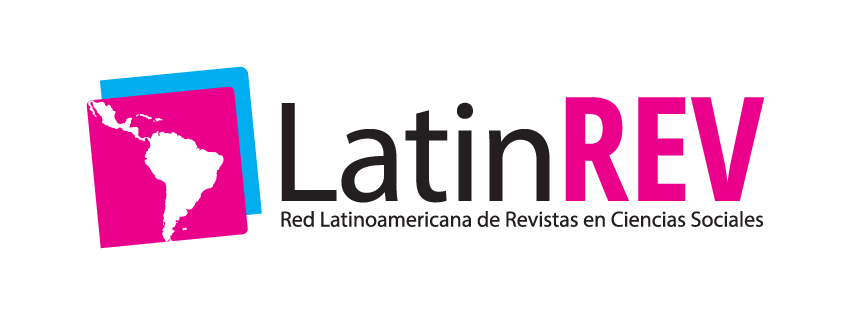Prediction of the freeze-drying time of Araza (Eugenia Stipitata) using mathematical models
DOI:
https://doi.org/10.46480/esj.5.4.172Keywords:
Araza, freeze-drying, mathematical models, RstudioAbstract
The post-harvest industry is one of the sources of income for Ecuadorians since the country presents favorable conditions for the sowing of a wide variety of agricultural products, among them the vegetables and fruits that are consumed daily in our country and that never stand out. they are missing from the consumers' table. Fruits, which are the fruits or the fleshy parts of flower organs that reach a certain degree of maturity for their harvest and subsequent consumption, provide essential vitamins and nutrients to a balanced diet as it optimizes metabolism and favors digestion. It is also characterized by its low caloric content and a sale price which is affordable for consumers. The araza is a climacteric fruit typical of the Ecuadorian Amazon region that has a vitamin C content of 74%, twice that of the orange, but as it is a food with more than 90% humidity, it tends to decompose quickly. Therefore, the physical-chemical characteristics and freeze-drying time of the fruit were determined through mathematical models using the RStudio software to simulate the freeze-drying process and thus preserve its vitamin content. The freeze-drying time of the araza was 26.07 h, a value that is ideal for freeze-dried foods.
Downloads
References
AOAC 923.03. (2020). Método general del Codex para determinación de cenizas. Comisión Del Codex Alimentarius, 1–18. http://www.fao.org/tempref/codex/Meetings/CCMAS/ccmas36/ma36_03s.pdf
Arias, S., Ceballos, A. M., & Gutiérrez, L. F. (2019). Evaluación de los parámetros del proceso de congelación para la pulpa de Açaí. In TecnoLógicas (Vol. 22, Issue 46). https://doi.org/https://doi.org/10.22430/22565337.1117
Bedoya, D., Cilla, A., Contreras, J., & Alegría, A. (2017). Evaluation of the antioxidant capacity, furan compounds and cytoprotective/cytotoxic effects upon Caco-2 cells of commercial Colombian coffee. Food Chemistry, 219, 364–372. https://doi.org/https://doi.org/10.1016/j.foodchem.2016.09.159
Biglia, A., Comba, L., Fabrizio, E., Gay, P., & Aimonino, D. R. (2016). Case Studies in Food Freezing at Very Low Temperature. Energy Procedia, 101(September), 305–312. https://doi.org/10.1016/j.egypro.2016.11.039
Chagas, R., Santos de Oliveira, C., Santos, L., Pereira, U., Matos, T., Denadai, M., & Narain, N. (2019). Enhancement of phenolic antioxidants production in submerged cultures of endophytic microorganisms isolated from achachairu (Garcinia humilis), araçá-boi (Eugenia stipitata) and bacaba (Oenocarpus bacaba) fruits. LWT - Food Science and Technology, 111, 370–377. https://doi.org/https://doi.org/10.1016/j.lwt.2019.05.046
Chamberlain, R., Schlauersbach, J., & Erber, M. (2020). Freeze-drying in protective bags: Characterization of heat and mass transfer. European Journal of Pharmaceutics and Biopharmaceutics, 154(July), 309–316. https://doi.org/10.1016/j.ejpb.2020.07.013
Flores, E. (2017). Diseño de una Planta para el Procesamiento de Concentrado Congelado de Maracuyá (Passiflora edulis) por Evaporación Osmótica. 128.
Garcia, C., Alvis, A., & Dussán, S. (2017). Validación del método de microondas para determinar humedad en ñame espino (Dioscorea Rotundata Poir). Informacion Tecnologica, 28(2), 87–94. https://doi.org/10.4067/S0718-07642017000200010
García, L., Tejada, V., Heredia, E., Serna, S., & Welti, J. (2018). Differences in the dietary fiber content of fruits and their by-products quantified by conventional and integrated AOAC official methodologies. Journal of Food Composition and Analysis, 67, 77–85. https://doi.org/https://doi.org/10.1016/j.jfca.2018.01.004
Kumar, B., Smita, K., Debut, A., & Cumbal, L. (2016). Extracellular green synthesis of silver nanoparticles using Amazonian fruit Araza (Eugenia stipitata McVaugh). Transactions of Nonferrous Metals Society of China, 26(9), 2363–2371. https://doi.org/https://doi.org/10.1016/S1003-6326(16)64359-5
Kusch, C. (2018). Liofilización de frutillas enteras (Fragaria Ananassa Duch): Efecto de Micro-perforaciones realizadas con tecnología laser de CO2 en el tiempo de secado primario. https://hdl.handle.net/11673/46132
Luo, N., & Shu, H. (2017). Analysis of Energy Saving during Food Freeze Drying. Procedia Engineering, 205, 3763–3768. https://doi.org/10.1016/j.proeng.2017.10.330
Maleno, F. (2019). Evaluación del punto final de la liofilización en la pulpa de naranja. IIAD, 19. file:///C:/Users/Hp/Downloads/Maleno Berenguer, FJ-Evaluación del punto final de la liofilización en la pulpa de naranja.pdf
Moscoso, M., & Ochoa, M. (2018). Catálogo de Densidades y Consistencias de Alimentos como herramienta para Estimación de Porciones Alimentarias en Niños y Adultos de la ciudad de Cuenca. 78. http://bibliotecasdelecuador.com/Record/oai:localhost:123456789-29931
Reale, V., Torrez, M., & Giner, S. (2019). Desarrollo de un proceso para la obtención de Snacks saludables de frutas mediante liofilización. 2, 1–7.
Reyes, C., & Lanari, M. (2020). Storage stability of freeze-dried arazá (Eugenia stipitata Mc Vaugh) powders. Implications of carrier type and glass transition. Lwt, 118(November), 108842. https://doi.org/10.1016/j.lwt.2019.108842
Santiago, A. (2017). Influencia de la liofilización a presión atmosférica asistida por ultrasonidos en el contenido de carotenoides de pimiento. IIAD, October, 23. https://www.semanticscholar.org/paper/Influencia-de-la-liofilización-a-presión-asistida-Martínez-Teresa/8bc775f94a980fcc996753668c2ddba42ac4b8a7
Syumey, T. (2017). Agua en los Alimentos. 64. http://www.qo.fcen.uba.ar/quimor/wp-content/uploads/12-8 EL AGUA EN LOS ALIMENTOS.pdf
Talens, P. (2019). Determinación de la cantidad de agua congelable y no congelable presente en un alimento congelado. Universidad Politécnica de Valencia, 6. https://riunet.upv.es/bitstream/handle/10251/68367/Talens - Determinación de la cantidad de agua congelable y no congelable presente en un alimento ....pdf?sequence=1&isAllowed=y
Tubón, M. (2017). Determinación experimental y predicción del tiempo de congelación de pulpa de guayaba (Psidium guajava) pasteurizada y envasada en cilindros de 200 kg. Universidad Técnica de Ambato.
Wang, P., & Xu, X. (2018). Modified Starches and the Stability of Frozen Foods. Starch in Food Structure, Function and Applications Woodhead Publishing Series in Food Science, Technology and Nutrition, 2, 581–593. https://doi.org/https://doi.org/10.1016/B978-0-08-100868-3.00014-7
Published
Issue
Section
License
Authors retain the copyright of their articles and are therefore free to share, copy, distribute, perform, and publicly communicate their work on their personal websites or in institutional repositories after its publication in this journal, provided that full bibliographic information is given to acknowledge its original publication.































